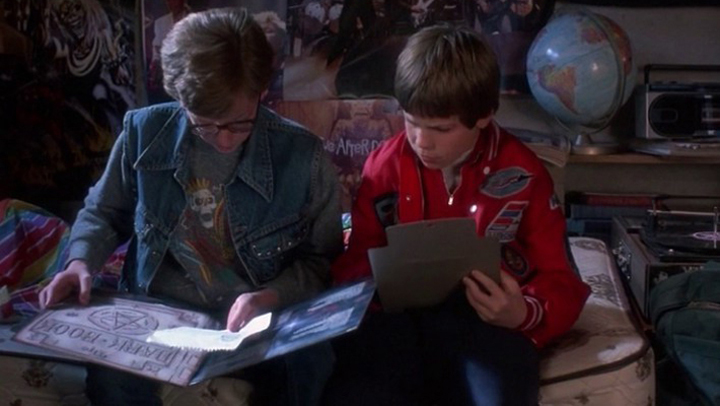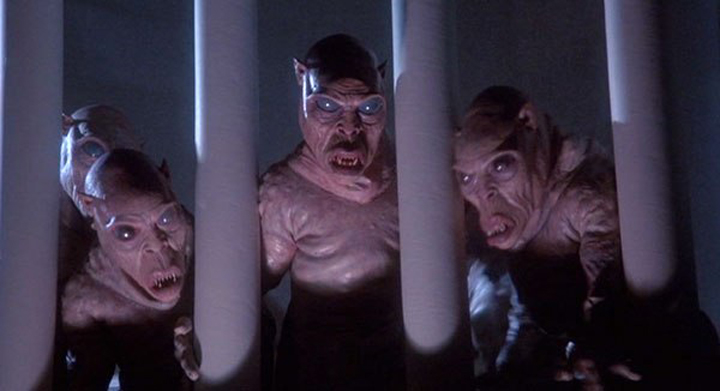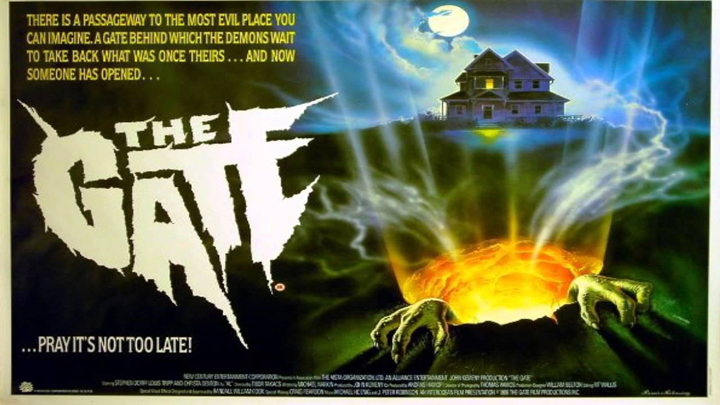The ’80s were a prime time for horror and metal. It was a symbiotic marriage that piqued the interest of audiences in the height of the Satanic Panic. Suburbanites feared any music, TV show, or game that appeared to be too dark or too taboo for their precious children. Capitalizing on the opportunity to subvert both the horror and metal genres, director Tibor Takács and writer Michael Nankin joined forces to create diabolic fun and frenzy with their 1987 horror classic, THE GATE. Addressing demons, death, sacrifice, friendship, and familial love, this epic monster movie shows us that horror and metal may have the perceived possibility to harm, but the devilish duo heals more than anything (even decades later).

Stephen Dorff stars as Glen, a young kid who has an affinity for blasting off toy rockets and hanging out with his older sister Alexandra, “Al” (Christa Denton), and his zany best friend, Terry (Louis Tripp). After a disturbing nightmare, Glen and Terry discover a geode in Glen’s backyard. Upon cracking it open, a cryptic incantation appears on a sketch pad. With their parents out of town, mysterious events occur until Terry realizes a portal to Hell has been opened and sacrifices are needed to bring forth the Old Gods. The three kids subsequently fight off demons and have to figure out how to contain the relentless evil all before Mom and Dad come home.
Music plays a pivotal role in both summoning and warding off evil. Terry is a metalhead who enjoys spinning records in his free time and reciting the druid-like dialogue on his most recent album from a band called Sacrifyx. The album’s lyrics are based on “The Dark Book”—which provides insight into the Satanic realm. Once strange events start occurring at Glen’s house, Terry realizes how to stop the demons and why they’re there in the first place. The two kids use a method called backmasking which consists of spinning a record backwards to reveal secret messages. It is a recording technique in which a sound or message is recorded backward onto a track that is meant to be played forward. Popularized by The Beatles on their 1966 album Revolver, backmasking was used in a light-hearted manner mostly through instrumentation. The B-side for the Liverpudlians’ single “Paperback Writer” was the song “Rain,” which featured a quick segment of vocals and musical notes recorded in reverse. However, backmasking sparked several conspiracy theories in pop culture and caused conservative parents to assume this method was a way to corrupt their children. This led to the burning of vinyl in the ‘70s and ‘80s from Christian groups who thought popular bands like Black Sabbath, The Eagles, and Led Zeppelin were sending Satanic messages to youth. Nankin subverts the negative connotation with backmasking in THE GATE by utilizing the method to supply a resolution for warding off demons instead of worshipping them.

One of the great aspects of THE GATE is that the film embraces metal and displays a sense of comfort and healing through the misunderstood music genre. Dressed in denim jackets with studs and back patches representing bands like Killer Dwarfs and Venom (a band who aptly released the song “The Seven Gates of Hell” in 1984), Terry stands out from Glen, Al, and Al’s friends who are all dressed in stereotypical ‘80s mallrat attire with bright colors, jerseys, and side ponytails. Glen’s dad labels Terry as “confused” because of his interests and appearance, claiming the death of his mother caused him to stray from the norm. The next day when Glen gets punctured with a large splinter and yelps in pain, Terry calmly responds by saying “that’s nothing.” It’s clear that Terry has been through some shit and experienced a deeper level of pain than most kids his age will ever know (even before tiny demons try to pull him into the depths of Hell or a zombie drag him through the closet walls). Metal is a cathartic escape for Terry and his trauma. Despite the stereotypes of the time, Terry is not evil himself nor is he an asshole. He is a good friend and thanks to his interest in metal, he has the answers needed to save his friends. The film’s portrayal of metal music is one of comfort, answers, and acceptance. Terry falls asleep at night to music and, even though Glen may not be into metal as much as his friend, he still accepts him for all of his interests and nonconformist traits. It is also a film well before its time since studies have shown that metal has the ability to combat emotions like anger and depression.
THE GATE is a pure celebration of horror and metal. Courtesy of special effects supervisor Randall William Cook (FRIGHT NIGHT, Q: THE WINGED SERPENT, POLTERGEIST II: THE OTHER SIDE), the effects are all practical and utilize forced perspective alongside stop-motion animation. All of the gimmicks still hold up well today and the film has matured into a beloved cult classic. THE GATE celebrates friendship, individuality, pain, and unconventional pleasures. Even though the way to close the gate is “with a true spirit of gentle passions wielding energy derived from pure love and light,” that doesn’t mean you can’t throw on ominous tunes and safely dance with the Devil every now and then.

Tags: 1987, backmasking, Christa Denton, Heavy Metal, Heavy Metal Movies, Killer Dwarfs, Louis Tripp, Michael Nankin, Paul Is Dead, Randall William Cook, Revolver, Sacrifyx, Satanic Panic, Stephen Dorff, The Beatles, The Gate, Tibor Takacs, Venom


No Comments